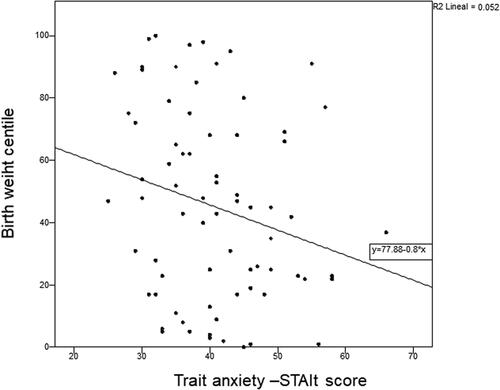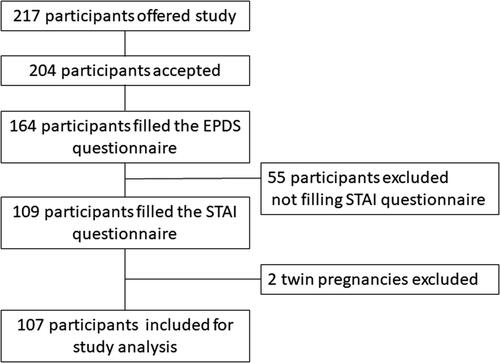Figures & data
Table 1. Maternal demographics, obstetric outcomes, neonatal outcomes, and data from psychosocial questionnaires (n = 107).
Figure 2. Graphical representation of the correlation between STAIt score and birth weight percentile.

Table 2. Univariate linear regression analysis to explore a potential correlation between birth weight percentile (adjusted for gestational age at delivery and neonate gender) and risk factors.
Table 3. Multivariate lineal regression analysis to explore a potential correlation between birth weight percentile (adjusted for gestational age at delivery and neonate gender) and risk factors.
Data availability statement
The data that support the findings of this study are available on request from the corresponding author, [MB]. The data are not publicly available due to [restrictions e.g. their containing information that could compromise the privacy of research participants]. The participants of this study did not give written consent for their data to be shared publicly, so this should be obtained before sharing for ethical reasons.
Contribution
What are the novel findings of this work? This research highlights the relevance of the trait anxiety during pregnancy on fetal growth. In pregnant women, exposed to stressful circumstances in real life, the trait anxiety was found to be an independent predictor of low birth weight.
What are the clinical implications of this work? To develop adequate strategies for early screening and treatment of anxiety symptoms and other mental health disorders during pregnancy, in order to improve the consequences of fetal growth disorders and other perinatal outcomes.

